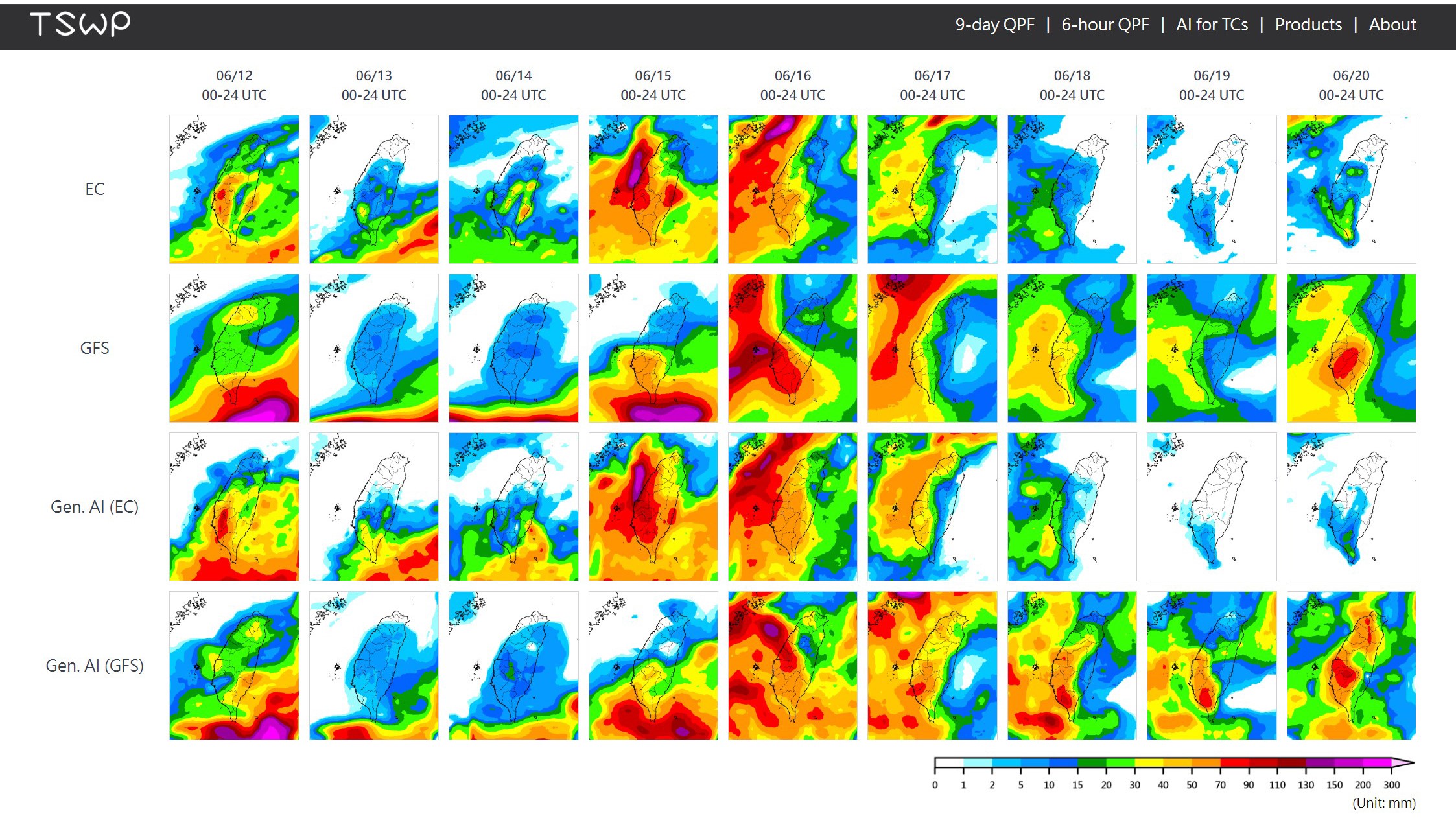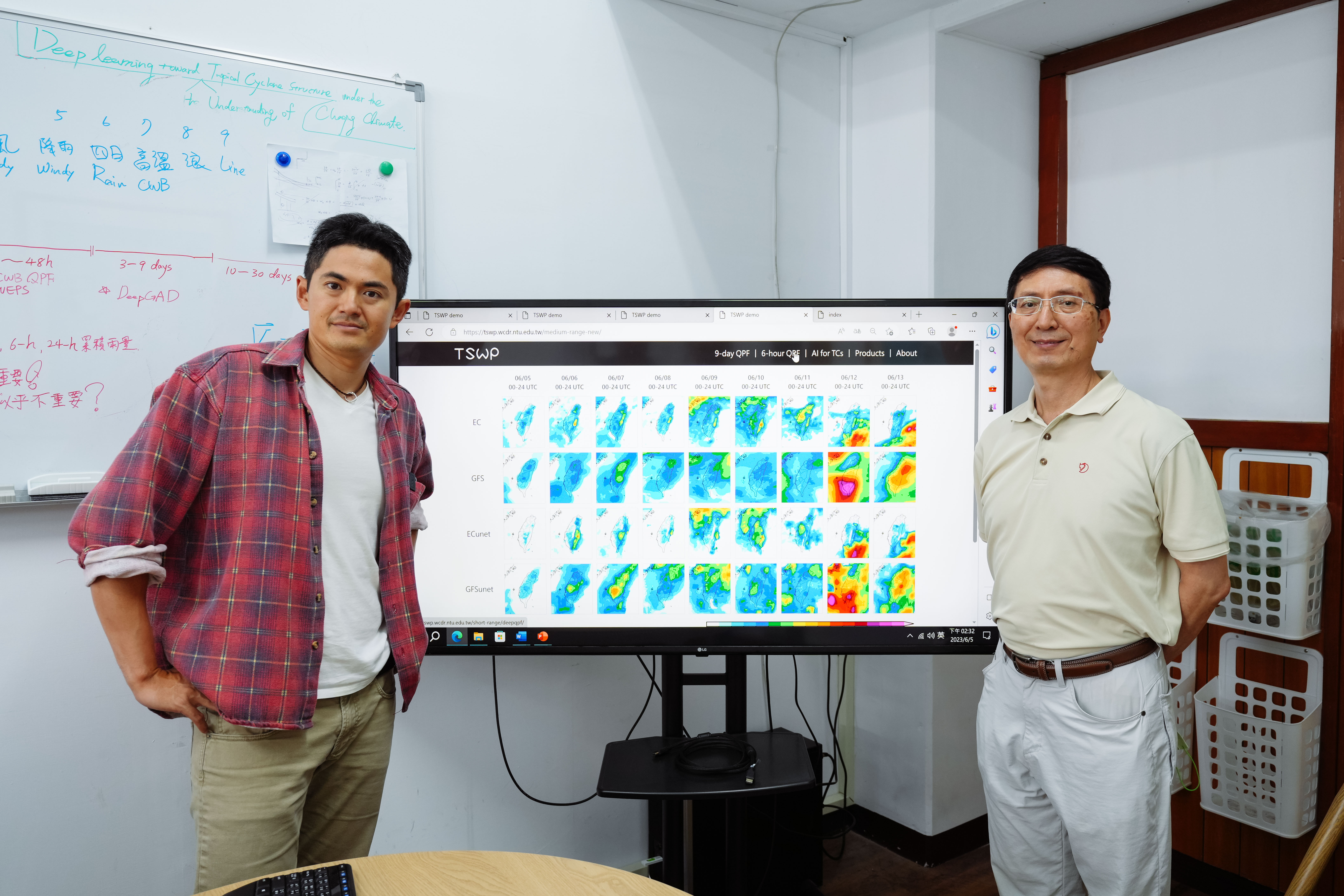Extreme rainfall has become increasingly prevalent due to climate change. Center for Weather and Climate Disaster Research (WCDR) has developed a platform to integrate meteorological and hydrological information to provide real-time operational services.
The WCDR has applied neural networks by utilizing AI deep learning algorithms to explore very short-term rainfall data, enhancing short-duration radar-based quantitative rainfall forecasts. This, in turn, leads to more refined meteorological and hydrological forecasting, more skilled personnel, and more expedited operational procedures.
The integrated platform provides real-time operational information supporting early warning for disaster prevention. The information is further converted into disaster alerts which the general public can easily understand for building disaster-resilient communities. By conducting community disaster education and training, the WCDR bolsters the capability of a community to prevent disasters, in turn, facilitating community disaster management organizations in their disaster preparation and responses.
Over the past few years, the WCDR has assisted the Taipei City and New Taipei City local governments in the promotion of the Resilient Taiwan: Large-Scale Typhoon and Earthquake Preparedness and Collaboration plan. It has also assisted the central government in implementing the 542 self-resilient communities in flood-prone areas throughout Taiwan. During typhoons and heavy rainfalls, these communities adopt independent disaster preparation and responses, reducing the disaster's impact. Additionally, the WCDR has assisted to recruit 1,621 civilian volunteers to help in flood prevention, river and coastal embankment inspection, and disaster monitoring for the integrity of relevant facilities.
The WCDR is one of the Core Group Members of the Association of Pacific Rim Universities (APRU) in the Multi-Hazards Program. It has signed memorandums of understanding with several renowned domestic and international universities and institutions, including the Disaster Prevention Research Institute at Kyoto University, the International Research Institute of Disaster Science at Tohoku University, Japan’s Kansai Electric Power Company, and Taiwan’s National Science and Technology Center for Disaster Reduction. By sharing its experiences in the development of meteorological and hydrological research and applications in disaster prevention, the WCDR has strengthened industry-academia collaboration, implemented specialized technologies in disaster prevention and responses, and enhanced its presence on the world stage.
Furthermore, the WCDR participates in several projects supported by the International Cooperation and Development Fund (ICDF) to establish flood modeling and monitoring systems in Belize—Taiwan’s diplomatic ally in Central America. This has helped build resilient communities and deepened Taiwan’s partnerships with Central American friends.
Integrated operation of meteorological and hydrological information for building disaster-resilient communities.

WCDR utilizes an AI deep learning algorithm for accurate short-term quantitative precipitation forecasting.

WCDR has employed neural networks and AI deep learning algorithms to analyze very short-term rainfall data, improving the accuracy of radar-based quantitative rainfall forecasts. As a result, meteorological and hydrological forecasting has become more precise, personnel have enhanced their skills, and operational procedures have been streamlined. In the photo, Dr. Buo-Fu Chen (left) and Prof. Jihn-Sung Lai (right) can be seen.

WCDR has developed a platform that integrates meteorological and hydrological information to deliver real-time operational services.